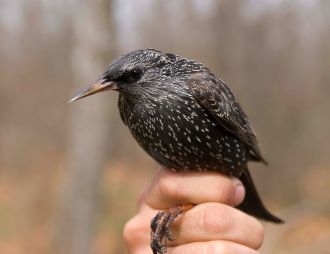
Bibliography
See all- 2021 Behavioral Ecology and Sociobiology 75: 52 Prenatal manipulation of yolk androgen levels does not affect egg coloration or size in a songbird.
- 2021 Journal of Comparative Physiology B 191:195-206 Ontogeny of leukocyte profiles in a wild altricial passerine
- 2019 Behavioral Ecology and Sociobiology 73: 160 Age-related patterns of yolk androgen deposition are consistent with adaptive brood reduction in spotless starlings
- 2019 Journal of Evolutionary Biology 32(1): 111-125 Harsh conditions during early development influence telomere length in an altricial passerine: links with oxidative stress and corticosteroids.
- 2018 Parasitology Research, 117(3): 919-928 Molecular characterization of avian malaria in the spotless starling (Sturnus unicolor)
- 2017 Oecologia, 185(4):629-639. The role of the mating system and intraspecific brood parasitism in the costs of reproduction in a passerine bird.
- 2017 Physiological and Biochemical Zoology 90(1), 106-117. Sex-Specific Effects of High Yolk Androgen Levels on Constitutive and Cell-Mediated Immune Responses in Nestlings of an Altricial Passerine
- 2015 Journal of Evolutionary Biology 28:1476–1488 Context-dependent effects of yolk androgens on nestling growth and immune function in chicks of a multi-brooded passerine
- 2015 Journal of Experimental Biology 218: 2241-2249 Diverse dose-response effects of yolk androgens on embryo development and nestling growth in a wild passerine
- 2013 General and Comparative Endocrinology 194: 175-182 Differential effects of yolk testosterone and androstenedione in embryo development and nestling growth in the spotless starling (Sturnus unicolor)
Spotless starling (Sturnus unicolor) breeding colony
Since 2002 we have been following a spotless starling population in a woodland near Madrid. Some 250 nest boxes are in use at the moment, with a very high occupancy rate.
Spotless starlings are medium-sized passerines, with a complex breeding strategy which includes facultative polygyny, intraspecific brood-parasitism, many floaters, and a high rate of nest sabotage, including infanticide. Most pairs manage two annual broods, and the modal clutch size is 5 eggs.
There is a high adult survival and philopatry rate (60%), something that allows a good follow-up of the birds throughout their lives, and accurate estimations of their life-time reproductive success. On the other hand, the recruiting rate for first year olds is also high (15%), and this is particularly relevant for studies that explore how early life conditions determine effects in adults.
Techniques
An intensive ringing campaign at the nest boxes takes place every year, two months before the laying season, and this allows capturing most of the adults present in the study site. We take extensive biometrical data, plumage colouration, behavioural observations, and blood samples from which physiological data can be gathered.
We fit adult birds with miniature microchips under the skin so that we can follow the bird behaviour at the boxes without further trapping. To do this, we count on microchip readers (TROVAN) which are routinely set in the boxes and provide us with a good activity estimate before and during laying, nestling feeding etc. In addition we use mini infra-red camaras to study nestling begging behaviour.

















